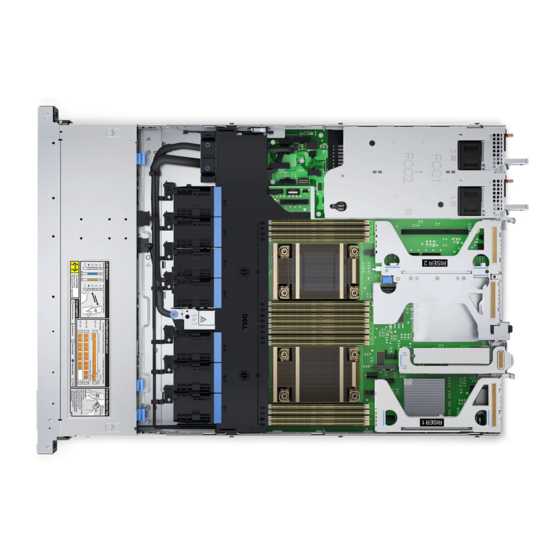Dell EMC PowerEdge R650xs Referans Kılavuzu - Sayfa 21
Sunucu Dell EMC PowerEdge R650xs için çevrimiçi göz atın veya pdf Referans Kılavuzu indirin. Dell EMC PowerEdge R650xs 25 sayfaları.

Table 22. System Security details (continued)
Option
SMM Security Migration
Secure Boot
Secure Boot Policy
Secure Boot Mode
Secure Boot Policy Summary
Secure Boot Custom Policy
Settings
Creating a system and setup password
Prerequisites
Ensure that the password jumper is enabled. The password jumper enables or disables the system password and setup password
features. For more information, see the System board jumper settings section.
NOTE:
If the password jumper setting is disabled, the existing system password and setup password are deleted and you
need not provide the system password to boot the system.
Steps
1. To enter System Setup, press F2 immediately after turning on or rebooting your system.
2. On the System Setup Main Menu screen, click System BIOS > System Security.
3. On the System Security screen, verify that Password Status is set to Unlocked.
Description
Enables or disables the UEFI SMM security migration protections. It is enabled for
Windows 2022 support.
Enables Secure Boot, where the BIOS authenticates each pre-boot image by using the
certificates in the Secure Boot Policy. Secure Boot is set to Disabled by default.
When Secure Boot policy is set to Standard, the BIOS uses the system manufacturer's
key and certificates to authenticate pre-boot images. When Secure Boot policy is set to
Custom, the BIOS uses the user-defined key and certificates. Secure Boot policy is set
to Standard by default.
Configures how the BIOS uses the Secure Boot Policy Objects (PK, KEK, db, dbx).
If the current mode is set to Deployed Mode, the available options are User Mode and
Deployed Mode. If the current mode is set to User Mode, the available options are
User Mode, Audit Mode, and Deployed Mode.
Table 23. Secure Boot Mode
Options
Descriptions
User Mode
In User Mode, PK must be installed, and BIOS performs signature
verification on programmatic attempts to update policy objects.
The BIOS allows unauthenticated programmatic transitions between
modes.
Audit mode In Audit Mode, PK is not present. BIOS does not authenticate
programmatic update to the policy objects and transitions between
modes. The BIOS performs a signature verification on pre-boot images
and logs the results in the image Execution Information Table, but
executes the images whether they pass or fail verification.
Audit Mode is useful for programmatic determination of a working set
of policy objects.
Deployed
Deployed Mode is the most secure mode. In Deployed Mode, PK
Mode
must be installed and the BIOS performs signature verification on
programmatic attempts to update policy objects.
Deployed Mode restricts the programmatic mode transitions.
Specifies the list of certificates and hashes that secure boot uses to authenticate
images.
Configures the Secure Boot Custom Policy. To enable this option, set the Secure Boot
Policy to Custom option.
Pre-operating system management applications
21
